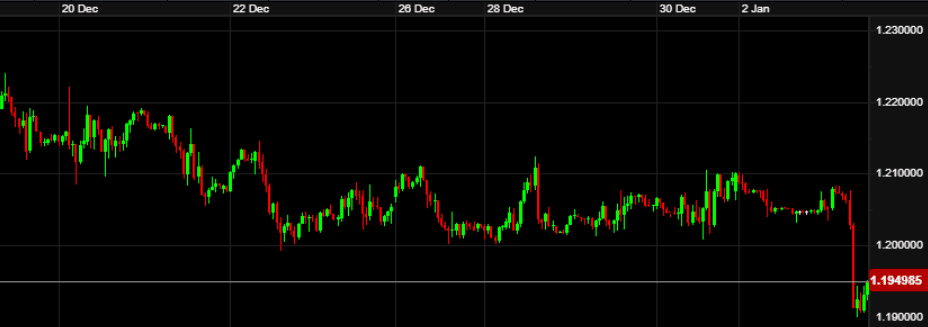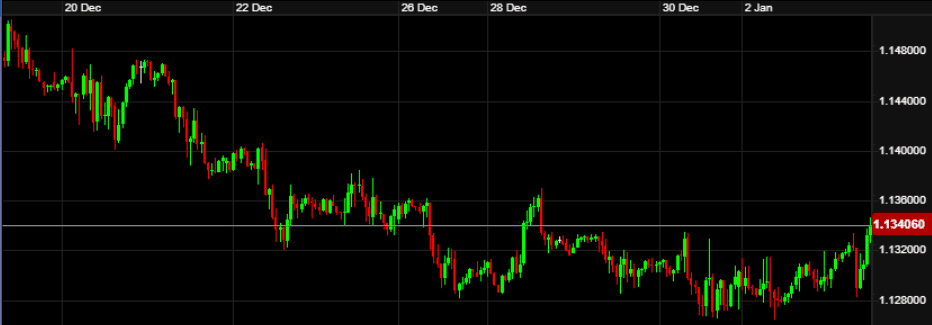ACM Update 03-01-23

The Christmas bank holidays and a general lack of data releases made for a quiet end to 2022 in the markets. GBP-EUR & GBP-USD stayed within pretty narrow ranges of circa 1%. As we enter the new year, GBP is suffering off the back of weaker PMI figures as well as the knock-on effects of the ongoing strikes throughout the UK.
As expected, a quiet end to 2023 with lower trading volumes and a general lack of data to keep markets entertained. As a result, I thought it might be interesting to look at the volatility on some of the major currency pairs throughout 2022 as a whole. Note that some of these figures may only have been for a split second and are mid-market figures for indication purposes only.
2022 – Highs & Lows |
Low |
High |
% Range |
GBP-EUR |
1.0781 |
1.2191 |
11.57% |
GBP-USD |
1.0336 |
1.3749 |
24.82% |
GBP-AED |
3.7959 |
5.0493 |
24.82% |
EUR-USD |
0.9536 |
1.1494 |
17.03% |
GBP-CHF |
1.0167 |
1.2609 |
19.37% |
GBP-AUD |
1.5905 |
1.9221 |
17.25% |
Whilst the numbers above give the headline statistics, they don’t always tell the full story. Sterling-Dollar (& other USD-pegged currencies) clearly saw the most volatility in 2022, with the strength of the Federal Reserve on one side, versus the market turmoil from Liz Truss’ monetary policies on the other. Movements of 15% downwards in six weeks, followed by 11% back the other way in the space of the next six, show just how much volatility we can see. GBP also saw movements of 9% in a month against the Euro during September.
These movements go to show how much change we can see in markets, but also how important it is to take action to protect yourself/your business against market volatility. Such techniques allow you to budget more effectively and to ensure the cost of a purchase does not increase unexpectedly over time. We have heard many stories of profit margins being wiped out in 2022 through FX market movements alone, over short periods of time.
To discuss tools such as forward contracts with the Aston team for 2023, make sure to reach out and discuss in more detail. These can provide you with a line in the sand, but importantly a budgeted figure that will not fluctuate. Please reply directly to this newsletter if useful.
For the year ahead, the same circle of geopolitical tension leading to inflation, leading to interest rate hikes, leading to cost of living squeezes, is likely to remain a focal point. In the US, all eyes will be on the Federal Reserve as to when they declare their pivot point on interest rates, especially important for Dollar buyers and sellers in 2023. The Eurozone will need to keep an eye on their energy supplies and the geopolitical picture in Ukraine. For the UK, ongoing strikes seem to be the order of the day and these could well have a major impact on UK GDP as the year goes on. A period of stagflation on British shores, quite possibly…
As for last week itself, probably the only standout data release was the US unemployment claims for the week ending 24th December, which showed a slight increase. The figure which shows first-time benefits claimants was 9,000 higher than the previous week, coming in at 225,000. Admittedly, this was the figure markets were expecting, but it does show a slight softening in the US labour market. Something the Fed has been waiting on for a while to dictate ongoing monetary policy.
The moves in GBP-USD over the festive period can be seen below:

The apparent “re-opening” of China has also been making headlines, with Chinese nationals being able to travel again from 8th January, without the need to quarantine on return. A number of countries have implemented mandatory COVID test requirements for incoming Chinese citizens. Accurate statistics are somewhat hard to come by, but the eastern province of Zhejiang (home to 65m people), has suggested they are seeing 1m new infections a day and expect that to double in a week. The government meanwhile are suggesting a few thousand cases per day country wide. CNY was one of the few currencies to see any major movement over the Christmas period as a result.
At midnight on Sunday, Croatia became the 20th country to join the Euro, saying goodbye to the Kuna (HRK). It also joins the Schengen zone in the process. Movements on GBP-EUR during the holidays can be seen below:

The week ahead:
Monday – Bank Holiday for New Year’s Day in most countries
Tuesday – German Preliminary CPI (09:00 UK time)
Wednesday – Swiss CPI (07:30), UK Mortgage Approvals (09:30), Federal Reserve Minutes (19:00)
Thursday – US Unemployment Claims (13:30)
Friday – UK Halifax House Price Index (07:00), Eurozone Flash CPI Estimate (10:00), US Non-Farm Payrolls (13:30)
Next major Central Bank meetings:
Federal Reserve – 1st Feb, Bank of England – 2nd Feb, European Central Bank – 2nd Feb.
Into the new year we go then and back into full swing. US Non-Farm Payrolls will be the standout event of the week, with expectations of circa 200k jobs added. This would continue the slowdown the Federal Reserve have been looking for in recent meetings. Please do reach out to the team via the usual channels, with requirements coming up.
Have a great week and Happy New Year from the Aston team!